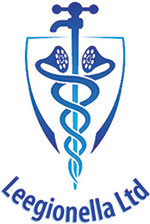Whether your business is large or small you have a legal duty to make sure that your business, including any water used within it, is safe for staff and visitors. If you have not been able to get access to the building to use the water system since shut down then there is a real risk that bacteria which are naturally present in water in small numbers and which do not normally cause us harm, could have grown to levels which could cause illness and even death when the system is first used.
Who is responsible: –
The owner / manager or the person who is ultimately responsible for health and safety of the organisation (the Duty Holder) has the responsibility for all water used within the business . If a business is rented the landlord will have responsibility for ensuring the hot and cold distribution system is safe but the business owner / manager will be responsible for any other equipment which uses or contains water they have introduced into the premises. For those leasing buildings the responsibility may be delegated to the business owner or remain with the owner/ management company. You will need to check your contract terms and conditions.
What is the risk
Water is at increased risk of causing harm where it has been allowed to stagnate as a result of little or no use and where the temperature of some, or all , the water is between 20 °C and 50 °C which allows a range of waterborne pathogens to grow (a pathogen is a microorganism which can cause infections). Additional risk factors include where there is corrosion, scale, sludge and sediment which provide nutrient sources and niches ideal for microbial growth.
Legionella and Legionnaires’ disease
The bacteria of most concern is Legionella which can cause Legionnaires disease, a type of pneumonia which is fatal in approximately 10% of cases. Whilst anyone can get Legionnaires‘ disease those at most risk include: the elderly (the risk increases the older you get); those whose immune systems are not working effectively either because of illness, or treatment, which depresses the immune system and those with underlying health problems such as heart disease, diabetes, respiratory illness etc.
Most cases of Legionnaires disease are caused by inhaling aerosols derived from sprays of droplets from evaporative cooling systems which aren’t managed properly. The second most common source of outbreaks and cases are associated with the use of poorly managed hot and cold water systems with spa pools coming third in the list of the most common source of Legionnaires’ disease . Other sources include a range equipment which can produce aerosols. Aspiration (water going down the wrong way and entering the lungs instead of the digestive tract) is another mode of infection of particular concern in healthcare and where there are persons with a poor swallowing reflex e.g. in the elderly and especially following a stroke or other illness which affects swallowing.
Other waterborne pathogens which may pose a risk
There is a range of other microorganisms which can also cause a potential risk to health if water is allowed to stagnate including Pseudomonas aeruginosa which can cause a range of infections including of the skin, ear, urinary tract. Common sources include hot tubs and whirlpool baths. Environmental Mycobacteria can cause skin and lung inflammation and infections and can grow in showerheads, footbaths etc. There is also a range of fungal pathogens particularly associated with causing nail and skin infections from footbaths, nailbaths etc.
Check what equipment contains or uses water
As well as making sure evaprative cooling systems and hot and cold water is safe when they re-open businesses also need to identify any other equipment which could pose a risk as a result of water stagnation and aerosolisation for example; irrigation systems, hair wash stations, whirlpool baths, foot spas, misting devices, water used in health spa treatments but don’t forget those spray bottles for damping down hair etc.
It would be sensible to make a list (an asset register) which can be used to check there is a risk assessment and management plan for each. This can be very simple for example, for a carpet or floor cleaner with a sump which collects water, just empty after each use and leave to dry and hang the hoses up so they drain and don’t hold water. For other more complex equipment they may need a maintenance regime and if left with water inside during lockdown you may need to get specialist advice. If you are unsure check with your local environmental health department or water treatment specialist. If using the services of a water treatment company to help get your business ready make sure they are competent and belong to a recognised trade association and where relevant the Legionella Control Association .
Swimming pools
PWTAG and Swim England have prepared advice for the safe opening of swimming pools see
http://https://www.pwtag.org/novel-coronavirus-covid-19-latest-information-2/
and
Where to get further advice
There is lots of advice available on line on managing building water systems during the COVID -19 pandemic including from:- the ESCMID Study Group for Legionella Infections:-https://www.escmid.org/research_projects/study_groups/legionella_infections/
From the Drinking Water Inspectorate (DWI ) see http://www.dwi.gov.uk/stakeholders/information-letters/2020/Advice%20Letter%20AL02-2020.pdf
From the HSE https://www.hse.gov.uk/news/legionella-risks-during-coronavirus-outbreak.htm
From the Chartered Institute for Environmental Health (CIEH ) https://www.cieh.org/news/press-releases/2020/businesses-risk-fuelling-legionnaire-s-disease-without-vital-post-lockdown-water-checks-warns-cieh/
For further advice on managing Legionella risks in the travel industry and other buildings see also the European Technical Guidelines for the prevention, control and investigation of infections caused by legionella see https://www.ecdc.europa.eu/en/publications-data/european-technical-guidelines-prevention-control-and-investigation-infection

